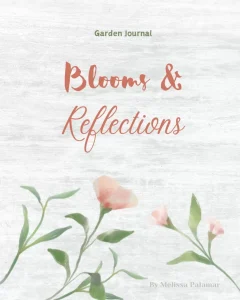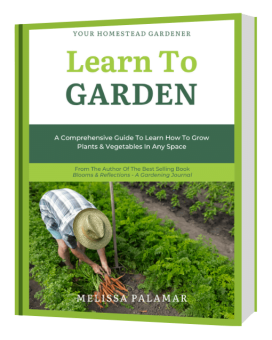Composting: Your Guide To What Goes In And What Stays Out
Composting is a practical and eco-friendly way to reduce waste and enrich your soil. But with so many different materials out there, it can be overwhelming to figure out what goes in your pile – and what stays out. Fear not! Today, I’ll cover everything you need to know about successful composting: from the best ingredients for optimal decomposition, all the way down to what pesky items should never find their way into your bin. So, grab a shovel (or pitchfork), and let’s get started on creating some seriously nutrient-rich soil!
Introduction: What is Composting?
Composting is the process of breaking down organic matter, such as food scraps and yard waste, into a nutrient-rich soil amendment known as compost. Compost can improve the quality of garden soil or potting mix, providing essential nutrients for plants, and helping to retain moisture.
While there are many different methods of composting, all successful composting systems share some key components:
- Oxygen: Composting microorganisms need oxygen to break down organic matter.
- Moisture: Organic matter must be moist to decompose. However, too much moisture can cause anaerobic conditions that will slow or stop the composting process.
- Heat: The composting process generates heat as microorganisms break down organic matter. This heat helps to speed up the decomposition process.
Benefits of Composting
When it comes to composting, there are a lot of benefits that come along with it. For one, it helps to reduce the amount of waste that goes into landfills. Composting also helps to create rich nutrients for your plants and garden, which in turn can lead to healthier plants and bigger harvests. Additionally, composting can help to suppress plant diseases and pests. And finally, composting is great for the environment since it helps to recycle organic matter and reduces greenhouse gas emissions.
What You Can Put in Your Compost Pile
There are a lot of things you can put in your compost pile, but there are also some things that should stay out. Here is a comprehensive list of what you can and cannot put in your compost pile:
Things You Can Put in Your Compost Pile:
- Fruit and vegetable scraps
- Coffee grounds and filters
- Tea bags
- Eggshells
- Shredded newspaper
- Cardboard
- Yard waste like leaves and grass clippings
What You Cannot Put in Your Compost Pile
When it comes to composting, there are a few things you’ll want to avoid putting in your bin as they can attract pests or jeopardize the nutrient density/composition of your compost pile. Here is a comprehensive list of what not to compost:
Things You Cannot Put in Your Compost Pile and Why:
- Meat and bones: These take a long time to break down and can attract pests.
- Dairy products: These can also attract pests and may smell bad as they decompose.
- Fatty or oily foods: These can go rancid and attract pests.
- Synthetic materials: These will not break down in the composting process.
- Disease or infested plants: You don’t want to spread disease to your other plants.
- Invasive species: Some plants can become invasive if allowed to spread their seeds in the compost.
- Perennial weeds: You don’t want these taking root in your garden beds.

The Only Garden Journal You'll Ever Need!
Embark on a journey through the seasons with ‘Blooms and Reflections‘ your companion in cultivating the garden of your dreams. This beautifully crafted gardening journal unfolds over 91 pages, offering a comprehensive space for all your gardening aspirations and practical needs.
How To Create A Healthy Compost Pile
To create a healthy compost pile, you need a healthy balance of the right ingredients.
The key ingredients for a successful compost pile are:
- Nitrogen-rich materials, such as green leaves, grass clippings, and kitchen scraps
- Carbon-rich materials, such as dead leaves, straw, and wood chips
- Water
- Air
To get started, mix equal parts of nitrogen-rich and carbon-rich materials. Add enough water to moisten the mixture, but not so much that it’s soggy. Then, turn the pile regularly to aerate it and help speed up the decomposition process.
If you keep your compost pile well-managed, it will be teeming with beneficial microbes that help break down organic matter. This results in rich compost that can be used to improve your garden soil.
Temperature, Oxygen, And Moisture Balance
Composting is all about creating the perfect environment for microorganisms to break down organic matter. This process is helped along by maintaining the right temperature, oxygen, and moisture balance.
- Temperature: The ideal temperature for composting is between 55-70 degrees Fahrenheit (12-21°C). This range allows for the most active breakdown of organic matter. Temperature can be monitored with a compost thermometer.
- Oxygen: Oxygen is necessary for aerobic microorganisms that do the work of breaking down organic matter. Compost should be turned regularly to aerate it and keep oxygen levels high.
- Moisture: Moisture is another important factor for successful composting. The material should be damp, but not soggy. Too much moisture will lead to anaerobic conditions, while too little will slow down the decomposition process.
Turning & Mixing Your Pile
It’s important to turn and mix your compost pile regularly to ensure that everything is decomposing evenly. To do this, use a pitchfork or garden shovel to turn the materials in the pile over, mixing the top layers with the bottom layers. Do this every 1-2 weeks.
As you’re turning and mixing your pile, keep an eye out for any areas that seem to be decomposing more slowly than others. If you find any pockets of material that aren’t breaking down, make sure to mix them in with other materials so they can continue decomposing correctly.
Troubleshooting Common Issues With Your Compost Pile
If you’re having trouble with your compost pile, there are a few common issues that can be easily fixed. Here are some troubleshooting tips:
- If your compost pile is too wet, add more dry materials such as straw or leaves as they’ll absorb the excess moisture.
- If your compost pile is too dry, add more green materials such as grass clippings or fruit and vegetable scraps as they release moisture as they decompose.
- If your compost pile smells bad, make sure it has the right ratio of green to brown materials. You can also try adding a handful of soil to absorb excess moisture and odors.
- If your compost pile isn’t heating up, turn it with a pitchfork to aerate it and help promote decomposition.
Conclusion
Composting is an easy and rewarding way to reduce your carbon footprint while creating nutrient-rich soil for your garden. We hope this comprehensive guide of what goes into a compost pile and what stays out has given you the confidence and knowledge needed to start composting today. Whether you are just starting or have been composting for years, we believe these tips will help ensure that your efforts are successful in producing healthy compost material that can be used in gardens or donated to local farms.

Want to learn how to grow like a Pro?
Unlock the secrets of a thriving garden! Enter your email below to get your FREE copy of ‘Learn to Garden‘ the essential guide that turns budding enthusiasts into green-thumb maestros. Let’s cultivate your gardening journey together, one leaf at a time!




